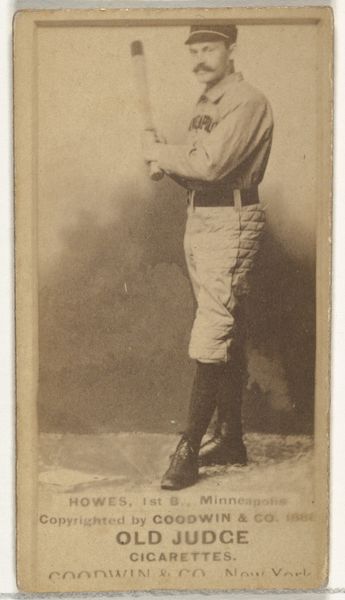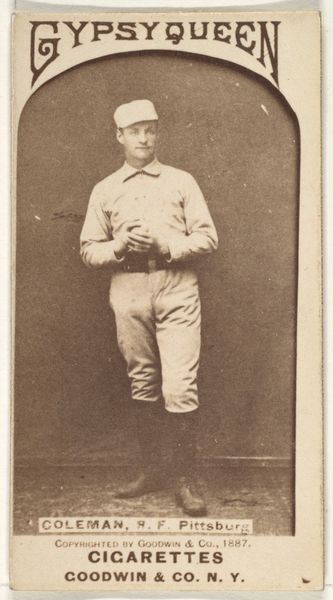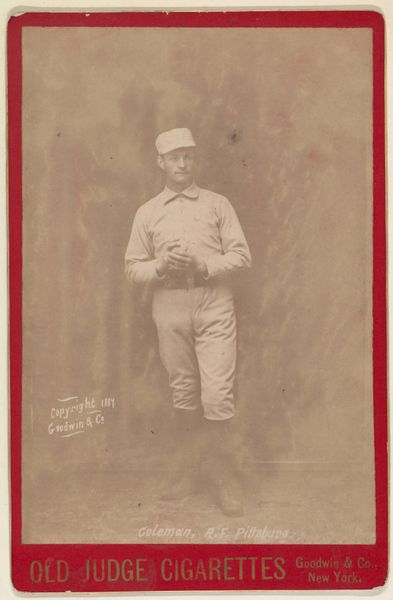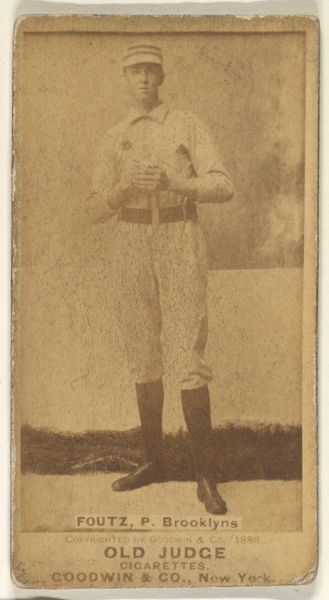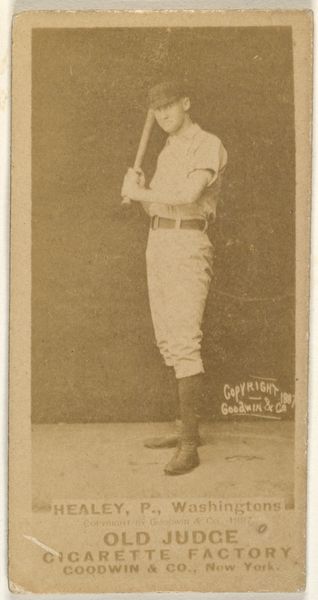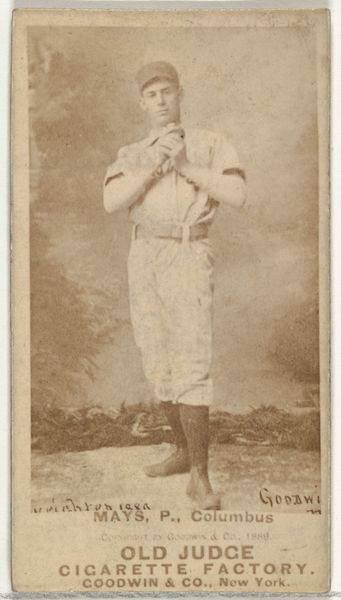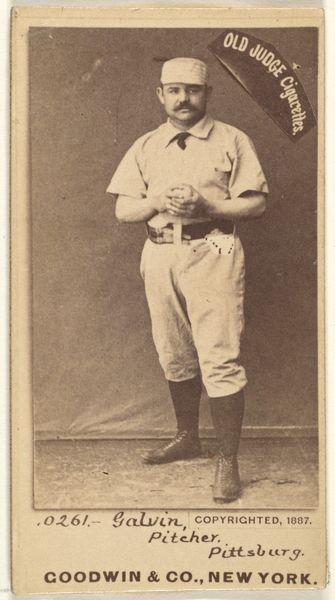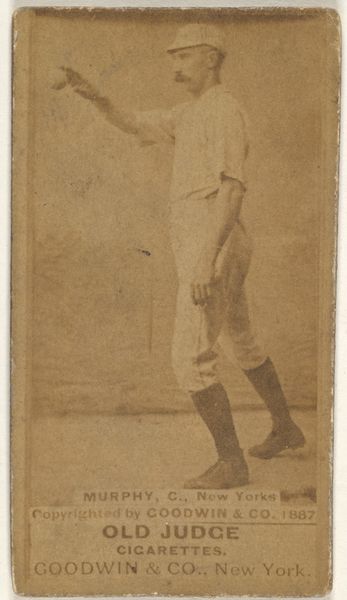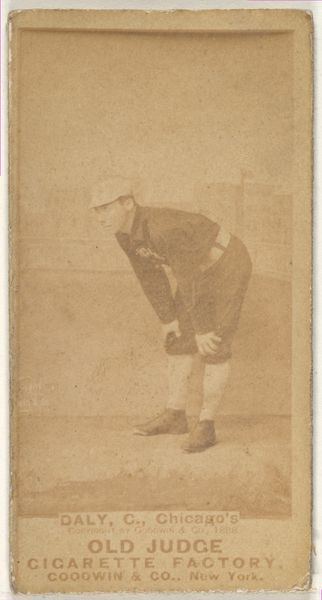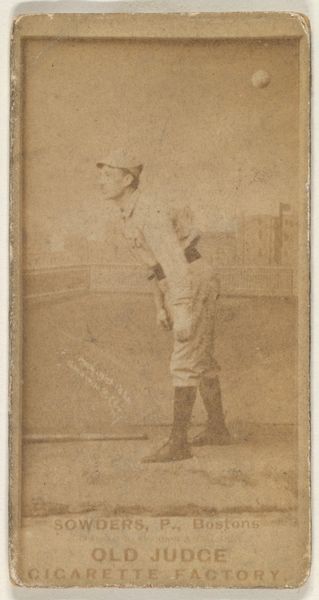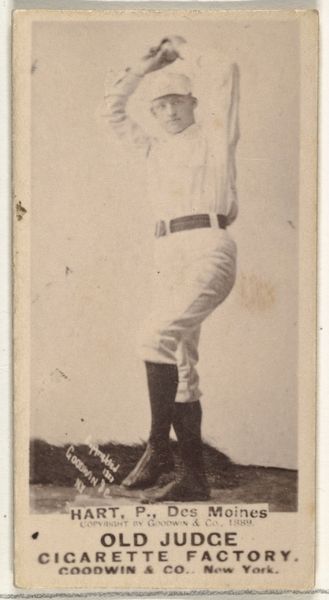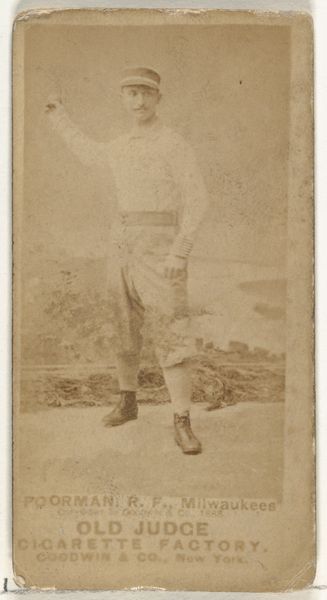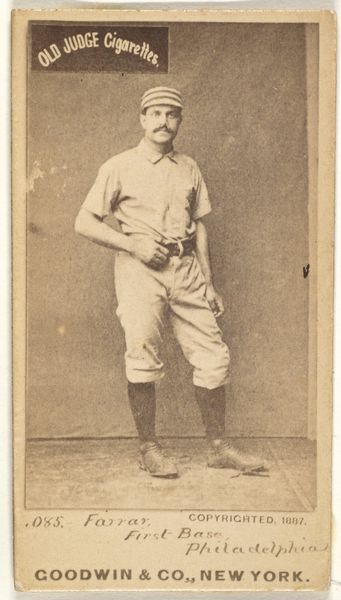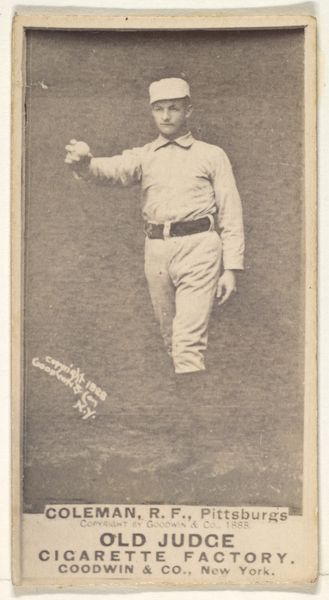
Magnetizer, from The World's Racers series (N32) for Allen & Ginter Cigarettes 1888
0:00
0:00
# print
#
landscape
#
horse
#
men
#
genre-painting
#
realism
Dimensions: Sheet: 1 1/2 x 2 3/4 in. (3.8 x 7 cm)
Copyright: Public Domain
Curator: Let’s discuss this small print called "Magnetizer, from The World's Racers series (N32) for Allen & Ginter Cigarettes," dating back to 1888. It's currently held in the collection of the Metropolitan Museum of Art. Editor: My first impression is that there’s something very serene about this racehorse and its rider, a sense of quiet composure almost at odds with the idea of racing. It is static and feels like an archetype more than a snapshot. Curator: Observe how the anonymous artist, under the Allen & Ginter brand, uses precise lines and shading to give volume to the horse’s musculature, really celebrating equine anatomy in detail. There is also a strong interplay between the horizontal planes of the landscape, and the verticality of the horse. Editor: The landscape is worth pausing on—it's not simply a backdrop, but essential context. Given this piece’s origin as a cigarette card, mass-produced for predominantly white male consumption, we must examine whose experiences were centered versus those pushed to the periphery of this very picturesque ideal. Think about what "sport" means in this moment. Curator: I concede your points, but I return to my initial assertion: The technical application is sophisticated for what was essentially promotional material. The light source from above accentuates the glossy coat of the horse, lending it an almost sculptural presence against the atmospheric haziness of the background. Editor: Yet this "haze" feels almost like a calculated erasure, a simplification of the complexities inherent in race and class structures during this era. This card idealizes leisure and wealth without acknowledging its deep ties to systemic inequities. These early forms of advertisement normalized certain viewpoints, consciously or unconsciously reinforcing existing power structures. Curator: While your contextualization is valuable, the piece has a certain harmony to it. See how the palette restricts itself, predominantly earth tones and sky blues? There is an equilibrium here that overrides any symbolic narrative you describe. Editor: Balance can also be blinding, a technique for masking dissonances. For me, analyzing visual culture of this era asks us to examine its omissions, and by understanding what the images conceal, what they normalize, we develop a critical understanding of that moment. Curator: In examining art like this, our differing approaches demonstrate its multidimensional nature; both the purely aesthetic, and socio-political dimensions offering valuable insights. Editor: Precisely, finding different routes, be they visual or intellectual, ensures these historical images become alive again through renewed consideration.
Comments
No comments
Be the first to comment and join the conversation on the ultimate creative platform.
